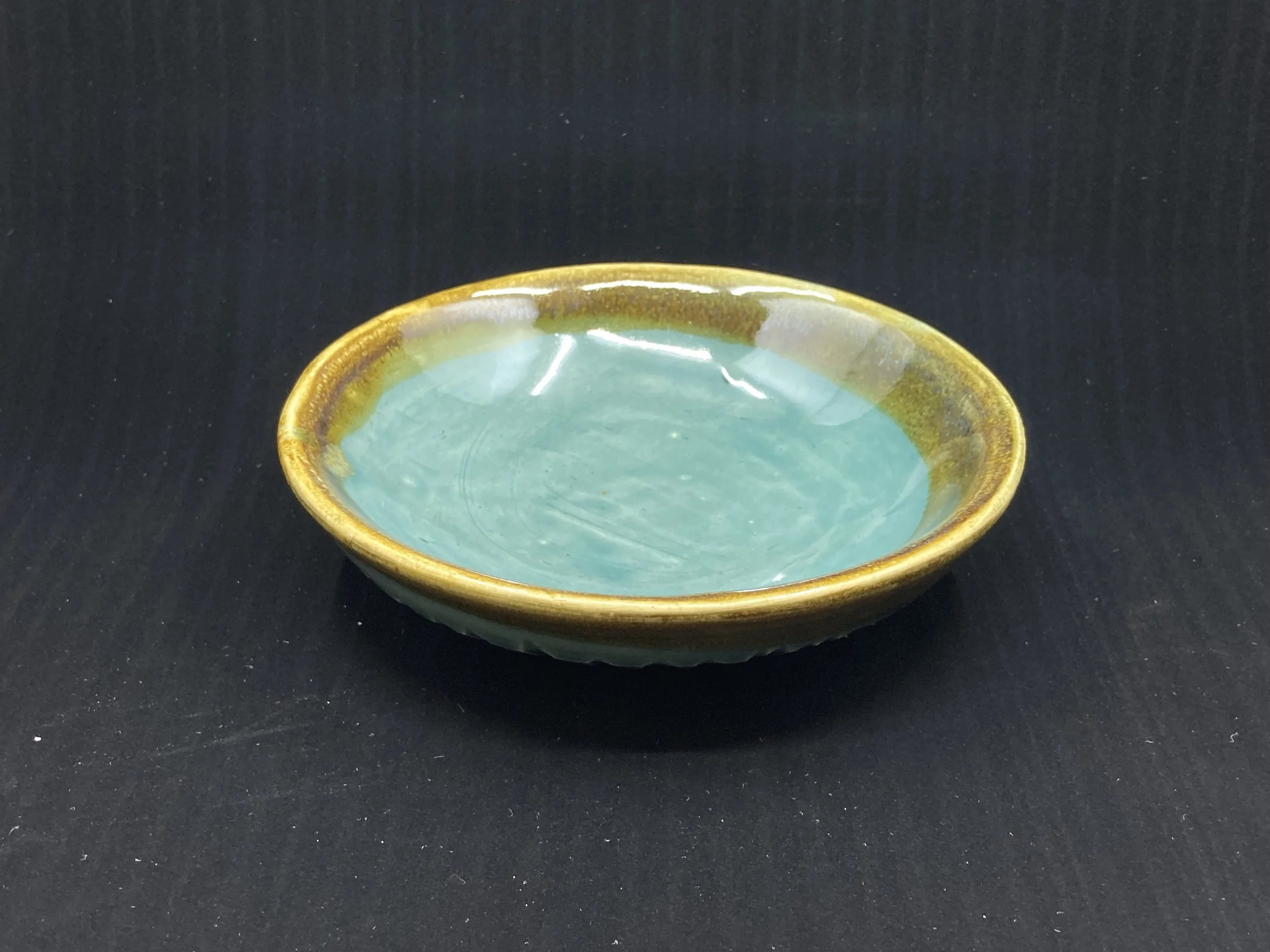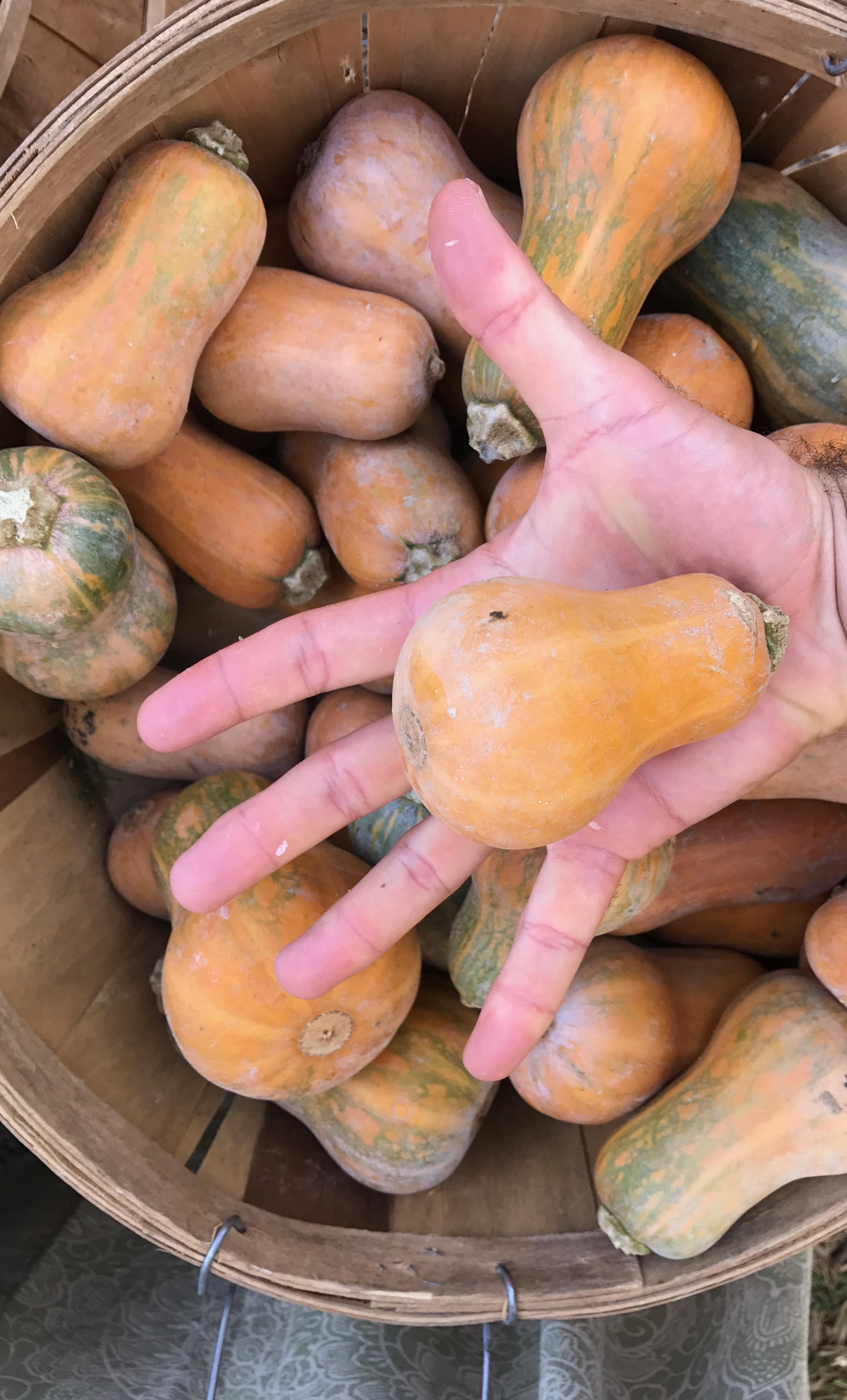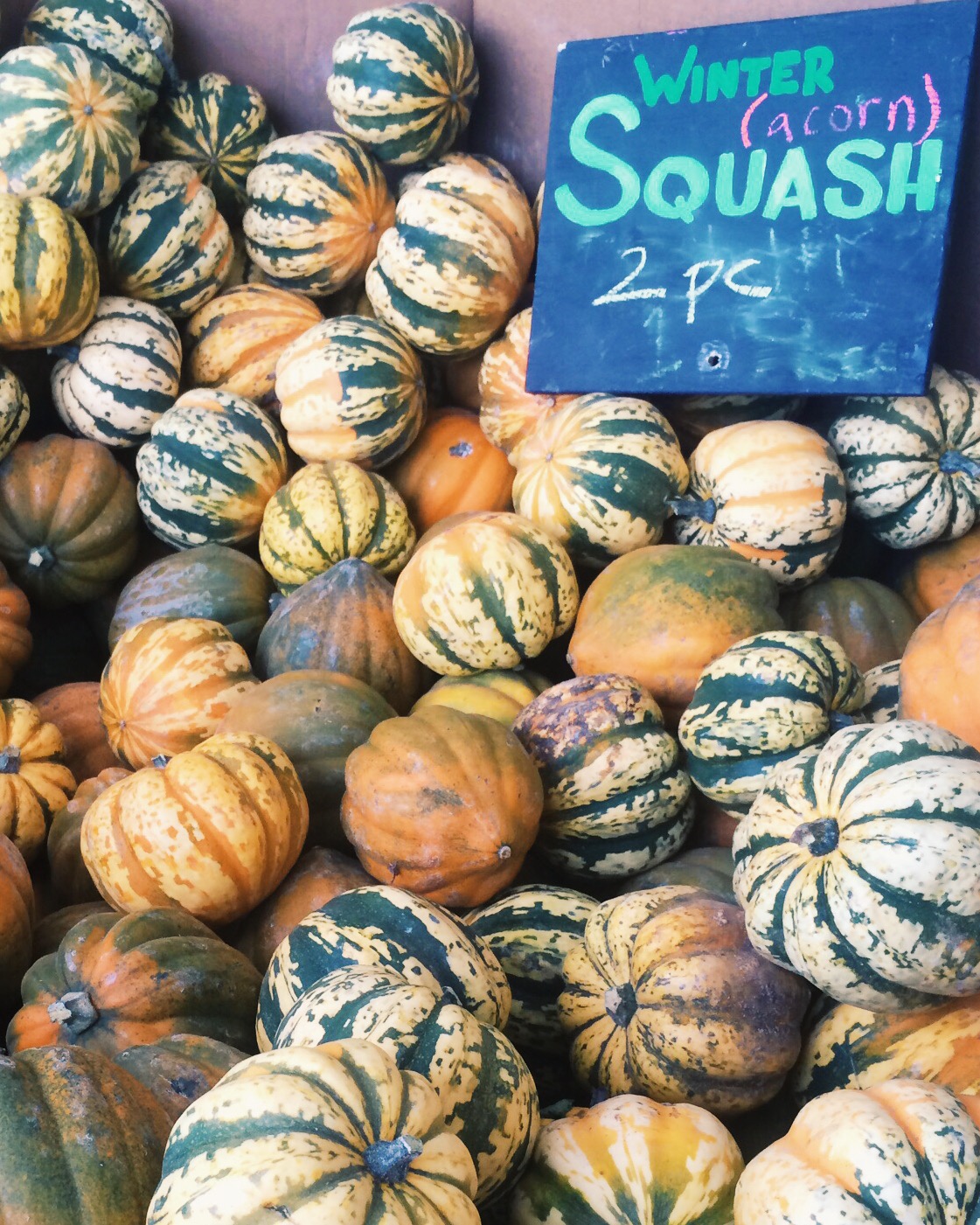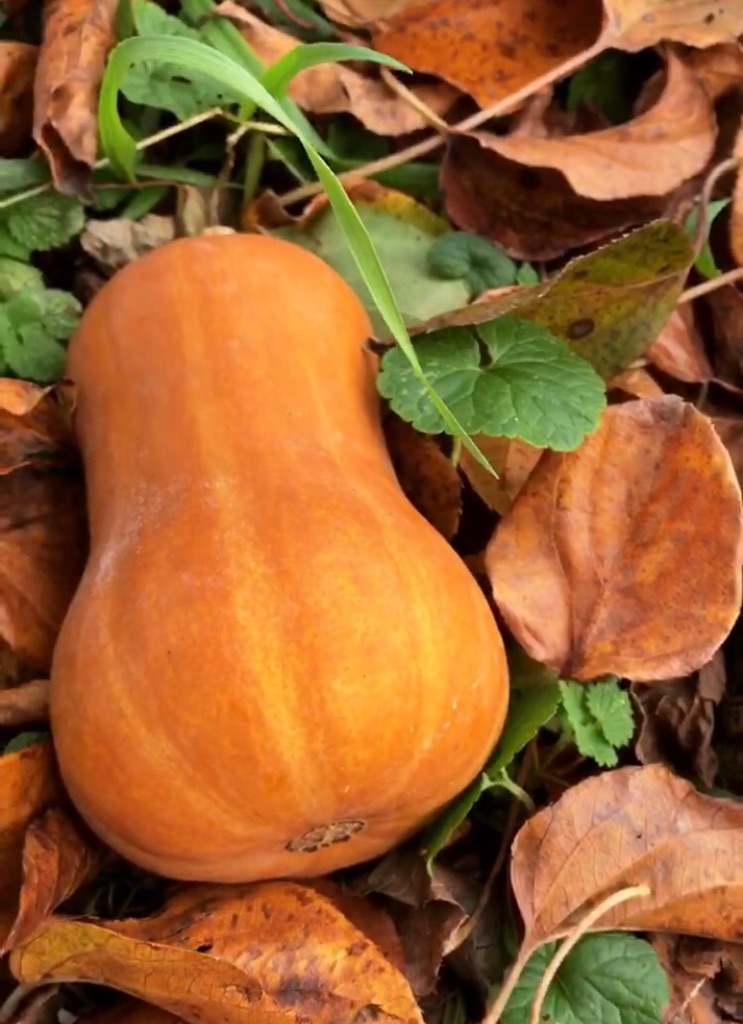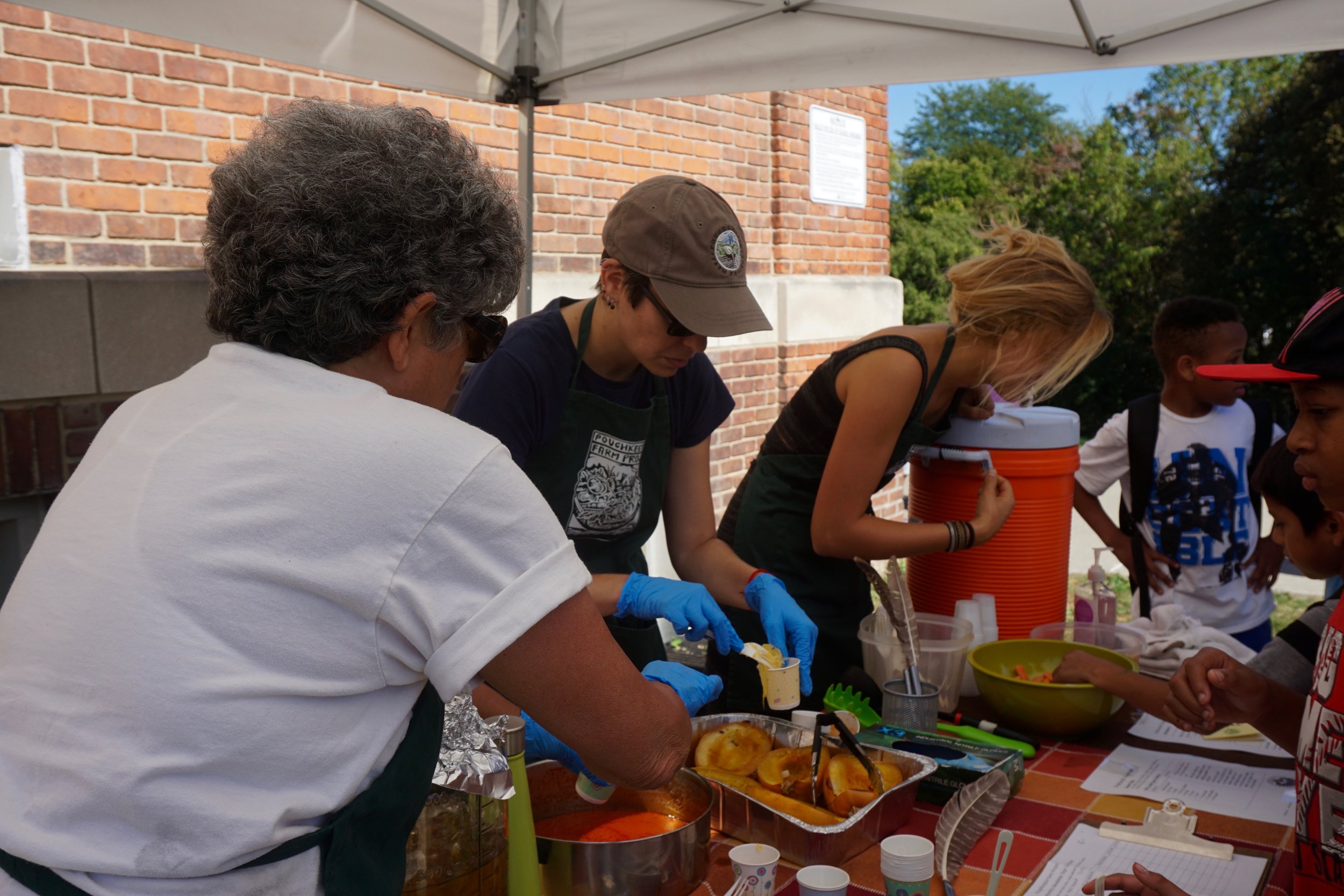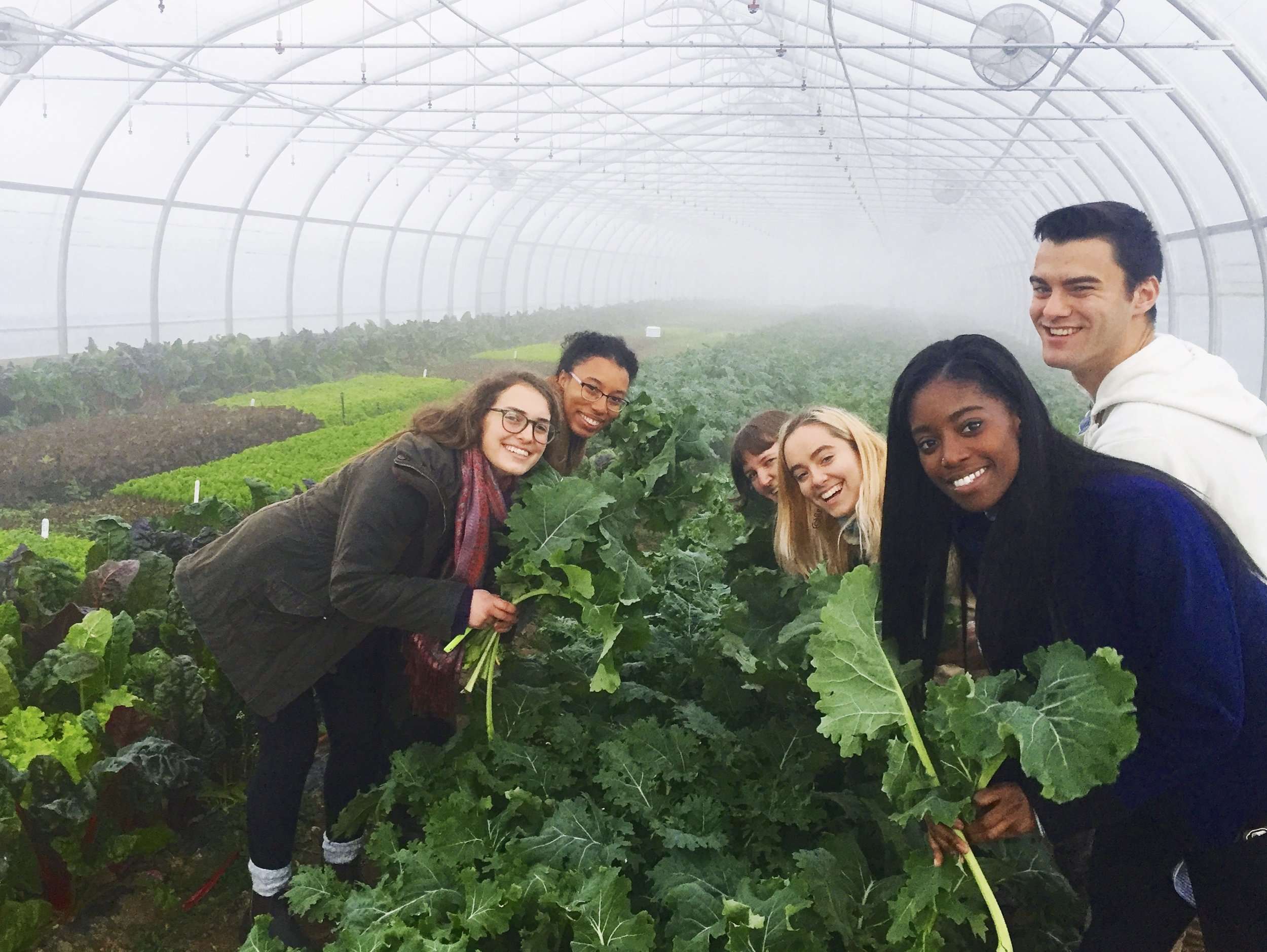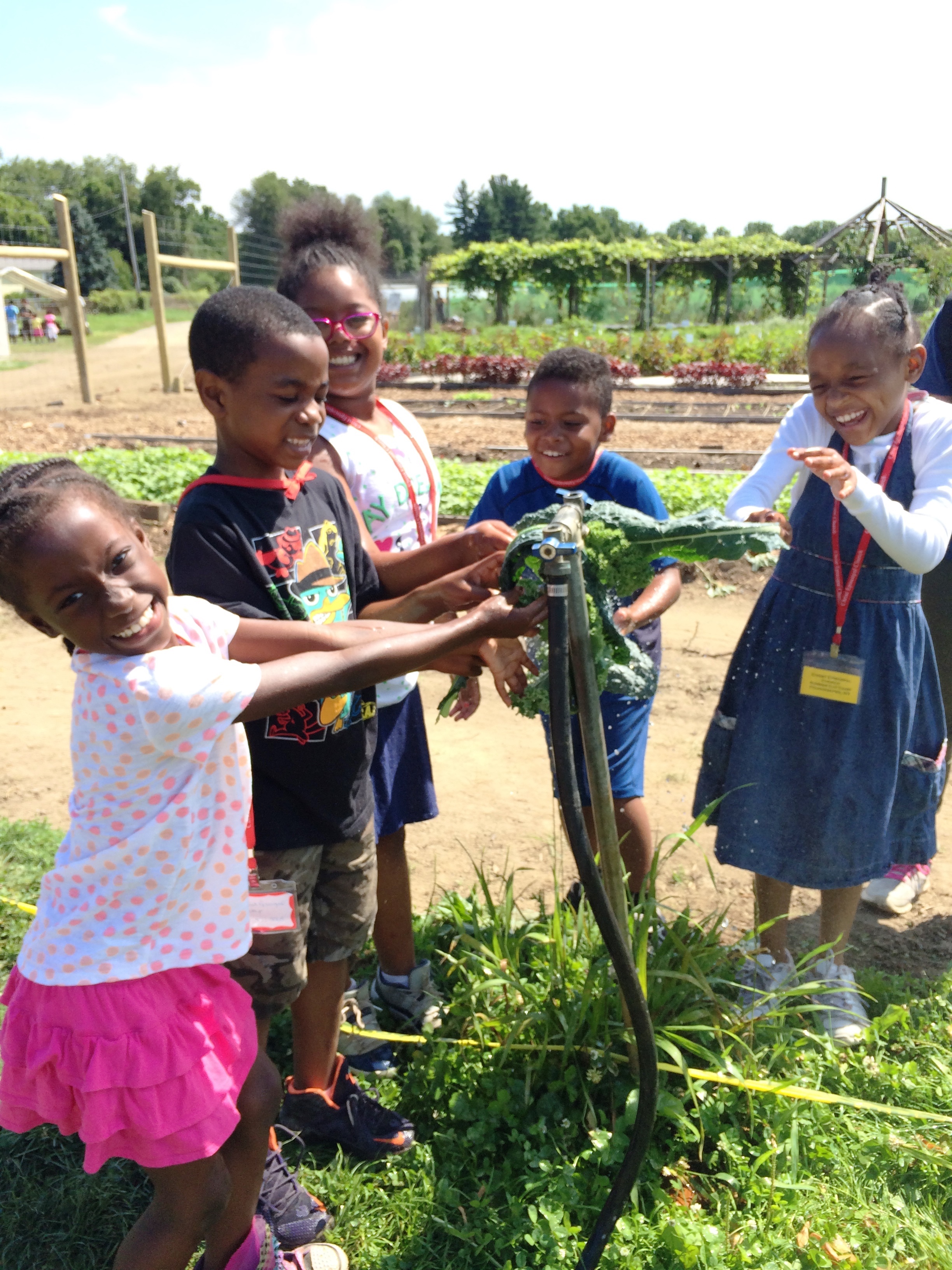Nosh on Squash!
December’s Harvest of the Month is Winter Squash.
By Elyse Canty, Education Intern
Winter squash are an annual vegetable that signals the end of our summer/spring crops: the tomatoes, cucumbers, eggplants, and okra, and welcomes the beginning of our lovely fall greens and winter roots. You can distinguish winter squash from summer squash because winter squash is harvested and eaten in the mature fruit stage meaning the seeds have aged and the skin has hardened into a tough rind which makes it the perfect winter crop. Luckily, for us the winter squash family comes in many different colors, shapes and sizes from a vivid yellow, watermelon-shaped spaghetti squash to a bright orange, round pumpkin that Charlie Brown would approve of.
Pumpkins, acorn or butternut squash have become symbols for the changing seasons. You know fall hasn’t officially started yet until you’ve had your first pumpkin spice latte. However, there’s much more to pumpkins and winter squashes than fall-themed lattes. Winter squash are great sources of beta-carotene which will help your immune system stay healthy and fortified to fight off any colds that may be headed your way this flu season. Pro tip: beta-carotenes are found in red-orange colored food. Pick a squash with dark coloring. The darker the orange flesh, the more nutritious the squash is.
Fun fact: squash got its name from the Native American word askutasquash, (try saying that three times fast) which means “a green thing eaten raw.” Now, I wouldn’t recommend eating your winter squash raw. However, winter squash very is delicious when it’s roasted. Roasted squash is very tender and roasting brings out it’s natural sugars so it’s very sweet.
At Poughkeepsie Farm Project (PFP) we grow several different varieties of winter squash including butternut, delicata, acorn, spaghetti squash. The farm crew’s favorite squash is delicate because it is easy to cut into rings and roast; it is delicious and you don’t even have to peel it because the skin becomes tender when you roast it.
One of our favorite ways to prepare winter squash is roasted butternut squash with children is by making it into hummus. Our butternut squash hummus is an easy recipe and fun to make with kids. In fact, it’s a fan favorite in many of our elementary school cooking workshops. This recipe doesn’t have exact measurements it all depends on how much you want to make and how you like your hummus. We like to tell our students that every time we make our butternut squash hummus, it’s special because it will be a little different each time.
Beforehand, roast the butternut squash until tender. Once cooled scoop the squash into a big bowl. The base of the hummus is roasted butternut squash, chickpeas and a dash of olive oil. The more chickpeas you add the thicker the hummus will be. You can add spices and seasonings for flavor such as paprika, tahini, garlic powder and lemon juice. Now, you can throw everything into the food processor or you can blend it the old-fashioned way which we prefer with a potato masher. You can pass the bowl around and give everyone a turn with the masher. Once the ingredients are blended together, the hummus pairs well with carrots or tortilla chips.
Even though winter is coming, we’ve got you covered! Sign up for a winter CSA share for PFP-grown butternut squash (and other tasty produce!) throughout the cold season.





